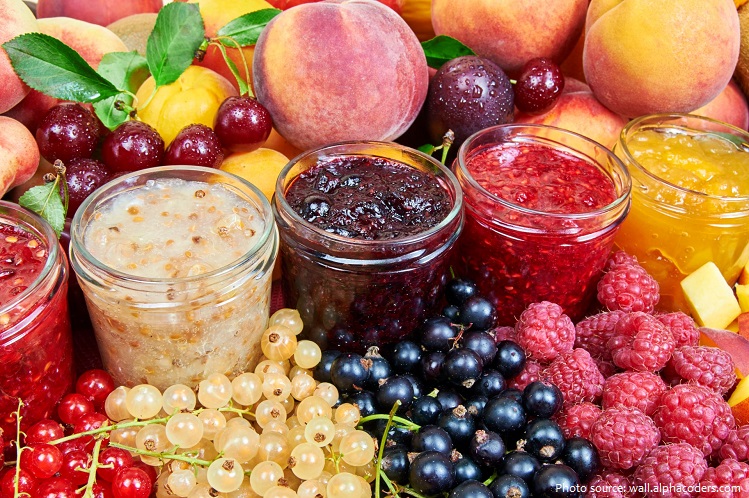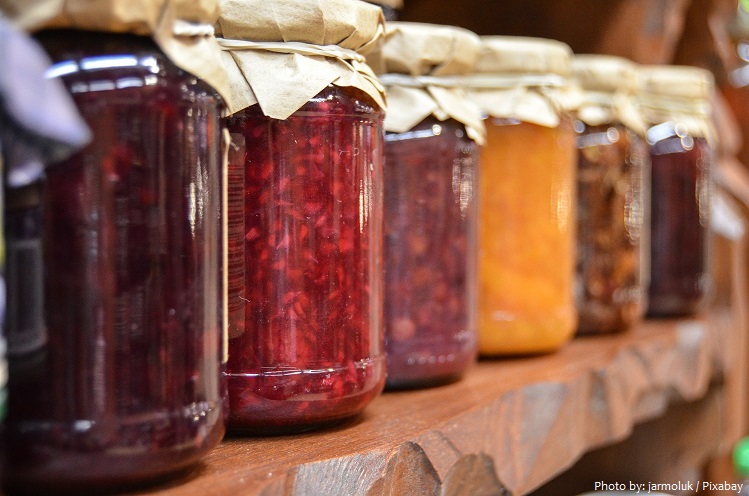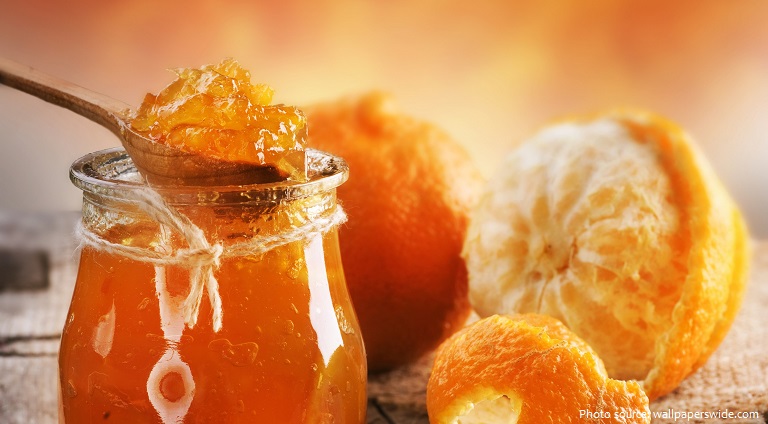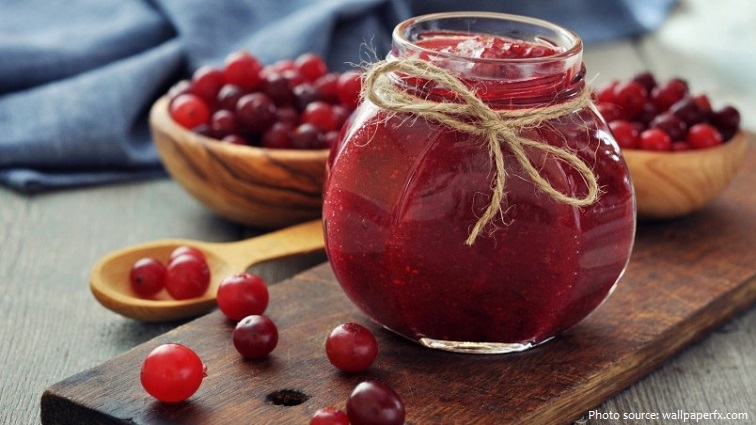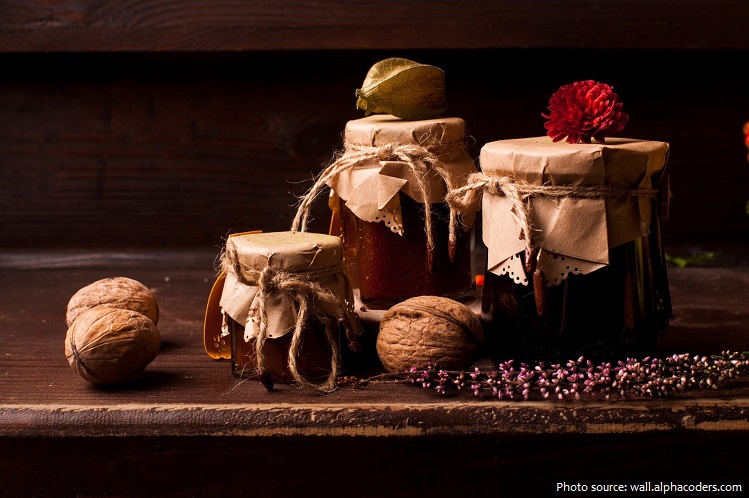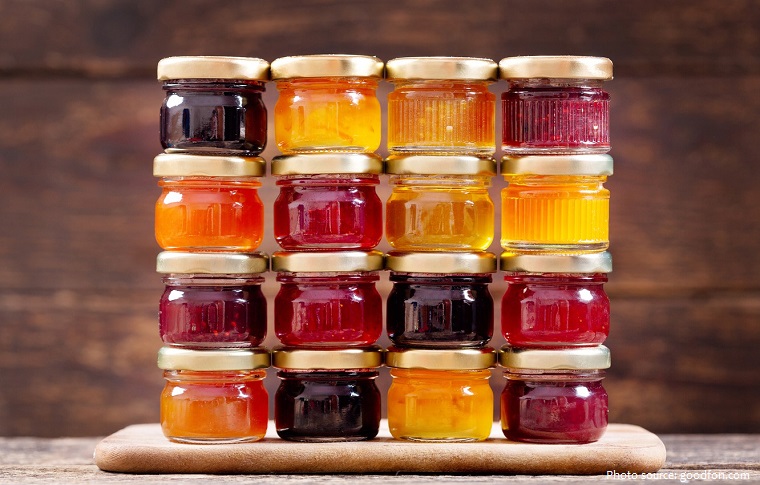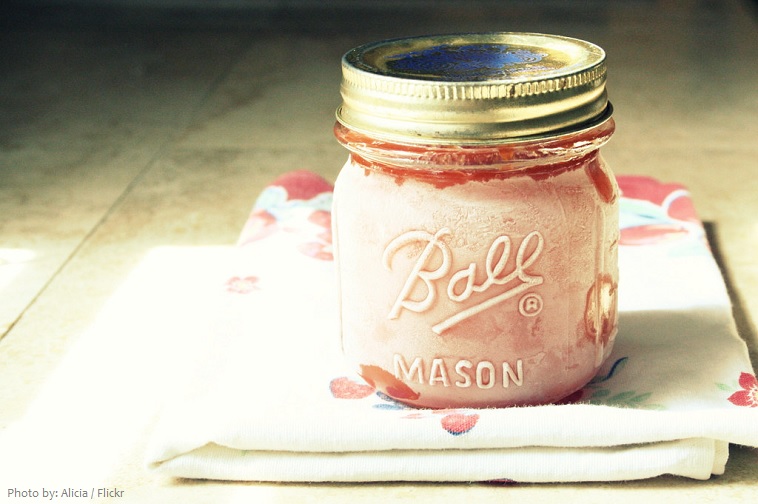Jam is a condiment.
It is usually made of whole fruit cut into pieces or crushed, sugar, and sometimes pectin.
Pectin is a naturally occurring substance found in berries, apples and other fruit. When heated together with sugar, it causes a thickening that is characteristic of jams.
Adding pectin when making jam also shortens or eliminates the cooking time, resulting in a fresher fruit flavour.
Recipes without added pectin use the natural pectin in the fruit to set. Tart apples, sour blackberries, cranberries, redcurrants, blackcurrant, gooseberries, grapes, plums, and quinces work well in recipes without added pectin.
Your grandmother probably didn’t use pectin. Instead she stood over a hot, boiling pot of water fruit and sugar, stirring hot mixture until it finally cooked down to a thicker consistency.
After making, jam is normally put into an airtight jar.
Making jam has a very long history. The earliest cookbook, called Of Culinary Matters, which dates back to 1st century Rome, contained recipes for making jam.
It was part of the diet in the countries of the Middle East where there was an abundance of sugar that grew naturally. Honey was also used as a sweetener. This enabled the people to have vitamins from fruit all year round.
Crusaders returning to Britain brought the jams and recipes back with them.
Joan of Arc ate quince jam before going into battle as it filled her with courage.
Sailors and pirates stockpiled jam on board their ships as it became clear that Vitamin C prevented scurvy.
Meanwhile, Louis XIV was so passionate about it that he insisted that every meal be finished with jams served in special ornate silver dishes. All of his was made from the fruit gardens at Versailles – and as they included tropical varieties like pineapple there must have been some interesting flavours indeed.
Although the immigrants to the US brought their own recipes with them, the first book on making jam appeared in this country in the 17th century. Early settlers in New England used other ways of making jam, using molasses, honey and maple sugar to give it the sweet taste. They used pectin obtained from boiling apple peel to use as the thickening agent.
Large-scale jam production did not become possible until the discovery of pasteurisation. In 1785 Napolean Bonaparte offered a reward to anyone who could find a way to preserve large quantities of food for soldiers. The lucky winner was Nicholas Appert, who worked out that boiling at high temperatures and then sealing in airtight containers kept food safe. Louis Pasteur validated these empirical findings in the next century.
The word “jam” first appeared in the early 18th century as a transitive verb meaning “to press or squeeze something” or “to wedge or immobilize something in an opening” (“The Ship … stuck fast, jaum’d in between two Rocks,” Defoe, Robinson Crusoe, 1719). The origin of “jam” is a bit hazy – the Oxford English Dictionary (OED) labels it “apparently onomatopoeic” and suggests it might be a variant of the verb “to champ,” meaning “to chew or bite” (as a horse noisily “champs” on its bit when excited or impatient). So “jam” was intended to be evocative of the sound, sight or feeling of something being forced into a tight spot.
In 1918, Welch’s company made its first jam product, Grapelade. The US Army bought the entire inventory and shipped it to France for consumption by the troops during World War I. When the troops returned to the States after the war, they demanded more “Grapelade.” Welch’s signature Concord grape jelly debuted in 1923.
In 1940 the Food and Drug Administration established Standards of Identity (legal requirements) for what can be called jam, jelly, preserves and fruit butters.
Today, the US produces about 1 billion pounds (about 450 million kilograms) of fruit spreads (jams, jellies, preserves, fruit spreads, marmalades, fruit & honey butters) annually. Per capita consumption is approximately 2.2 pounds (1 kilogram) annually.
Difference between jam and jelly: Jelly refers to a type of clear fruit spread consisting of firmed fruit (or vegetable) juice made with pectin. Jam refers to a product made with whole fruit, cut into pieces or crushed. While jams contain fruit pulp, jellies have the juice form of fruit.
Freezer jam is uncooked (or cooked less than 5 minutes), then stored frozen. It is popular in parts of North America for its very fresh taste.
In some parts of Russia and Georgia, immature pine cones are harvested in late spring and boiled to make a sweet, pungent jam.
The largest jam jar weighs 559.80 kg (1,234.14 lb), achieved by Instituto Tecnológico Superior de Los Reyes (Mexico) in Los Reyes, Michoacán, Mexico, on 4 June 2018. The jam was made from 600 kg (1322.77 lb) of blackberries, 300 kg (661.38 lb) of sugar, 2.4 kg (5.29 lb) of pectin and 3 kg (6.61 lb) of citric acid.
The most expensive jam in the world is made in Bar-le-Duc from red currants hand-seeded with a goose quill. Bar-le-Duc, a town in North-East France, has been making fine jams and preserves for the grandees of the world for the last 700 years. By far their most distinctive and famous product is the hand-seeded red currant jam. A 3-oz (85gr) jar goes for $40 a piece.

